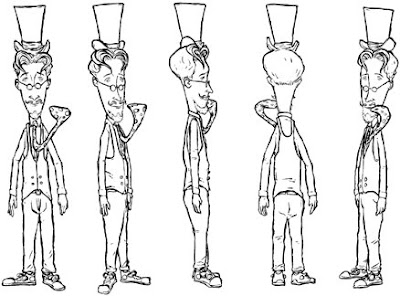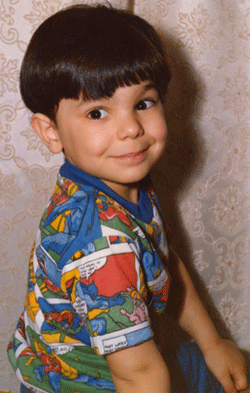
Click to view the site in a new window. Some functions have been
disabled. Don't be too sad.
I was enlisted to develop the Flash website for the film The Darjeeling Limited by the same agency who'd asked me to created the Deviated Discharge game for The Heartbreak Kid. They're in L.A. and they're very specialized - they only do movie websites. Must be nice, eh?
Because of the tight deadline (about three weeks), the number of people involved in the project (including Wes Anderson himself), and the scope of the site itself, this project wound up being the most complex website I've developed - by far.
This was first movie website I developed, and I was told by the lead agency that it's very uncommon for the director to be so heavily involved in its development - but that was exactly the case with this project. Besides getting input from the studio (Fox Searchlight) and the lead agency I was working for, Wes Anderson had already contracted his favorite design studio (he apparently uses them on all his films) to develop the overall look of all the film's promo pieces, both print and online. There was also a third agency involved, developing just one section of the site ("Explore TDL"). And I was the set of hands putting it all together in Flash... and dealing with lots of questions and problems along the way. Par for the course.
I never communicated directly with Wes Anderson, but at a few key milestones in the site's development he'd go to his agent's office in New York, review the site's progress, and compose notes. His agent would forward his e-mail to the lead agency, who would then forward it to me - stripping out Wes's original e-mail address before they hit "send". I guess to prevent me from forming any direct communication with the guy. Maybe they were scared I'd add him to my famous Tuesday morning knock-knock joke distribution list. Maybe.
The website was a pretty messy affair - integrating elements provided by so many different sources, in a tight timeframe, is never going to be pretty. Working on the little music player, for example, required hours of testing and modification - especially programming it to fade out quickly when the user views the trailer, so the sounds don't overlap. I listened to the beginnings of those songs so many times that when I eventually saw the finished film, I had some strange Pavlovian reactions each time a tune began, quickly visualizing myself in front of my computer at 2 a.m. trying to debug some ActionScript. It made it kind of hard to enjoy the performances of Owen Wilson, Jason Schwartzman, et. al.
Eventually the Flash site was completed and integrated into Fox Searchlight's main site, which contained their global navigation and some additional, changeable elements below the Flash piece, like news, contests, and other press pieces about the film. The site went live a couple weeks before the movie opened, and no, I know what you're wondering - I was not invited to the premiere. I'm not bitter, though.
I almost designed another movie website for this agency a few months aftering finishing this one. They asked me if I had time to develop a simple website for what they described as a "little indie with Jason Bateman". The timeframe was initially to be two week so I agreed to take it on, but then they cut it down to one week. I had to pass on the project - that's too quick for my blood. I need to sleep a little between projects. And of course, that little indie turned out to be: Juno - a much more well-received film than The Darjeeling Limited. Grrrr.













































